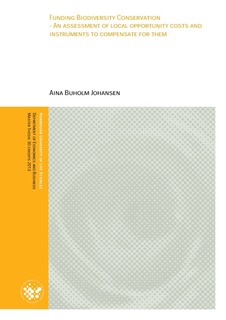| dc.description.abstract | Conservation of coniferous forests is a significant contribution to preserving biodiversity in Norway. At present about 2.7 percent of the productive forest area in Norway is conserved, while ecologists recommend at least 4.6 percent to have sufficient protection of biodiversity in Norwegian forests. Thus, from an ecological point of view, an increase in the conserved forest area is necessary. However, it comes at a cost to both local communities and the population as a whole. While the social benefits of conserving forest areas accrue to all households in Norway, the immediate costs in terms of foregone earnings will be borne by the local communities if they are not compensated for their economic losses by national authorities. The conservation process is often dominated by conflicts between pro-conservation interests at the national level and anti-preservation interests at the local level. The costs at the local level are not always taken into account at the national level as some of these costs are not considered to be social costs, but rather a distributive effect. This makes an extension of the conserved forest area
harder to obtain in practice.
This thesis considers the costs, incurred by municipalities, due to establishing Norway's largest forest reserve, Trillemarka-Rollagsfjell Nature Reserve, and discusses to what degree they were compensated for these costs through a Development Trust Fund (DTF) from the government. Cost-benefit analyses (CBA) at both the local and the national level are performed for different scenarios of losses and gains. The results show that a DTF almost fully compensates the municipalities for their costs as a result of the conservation. Seen in the light of other instruments, a DTF is found to be most appropriate in high conflict areas, where conservation otherwise would be difficult to implement. Vern av skog er en viktig del av bevaringen av biologisk mangfold i Norge. Per i dag er 2,7 prosent av produktiv skog vernet, men for å oppnå tilstrekkelig beskyttelse av arter anbefales det å øke vernet til 4,6 prosent. Denne økningen har effekter både på nasjonalt og lokalt plan. Mens nytten av skogvern tilkommer alle husholdninger i Norge, vil en stor del av kostnadene falle på lokalsamfunn i form av tapte muligheter for skogdrift og næring. Skogvernprosesser er ofte svært konfliktfylte, der naturverninteresser på nasjonalt nivå møter vernemotstand på lokalt nivå. Fra et nasjonalt ståsted blir mange av de lokale kostnadene ikke sett på som kostnader for samfunnet, men heller som fordelingseffekter som jevnes ut. Dette bidrar til at økningen i andel vernede skogområder blir vanskelig å oppnå.
I denne masteroppgaven vil jeg evaluere lokale kostnader for tre kommuner som fikk deler av sine arealer vernet gjennom opprettelsen av Trillemarka-Rollagsfjell naturreservat, og om kommunene ble kompensert for disse kostnadene ved å motta et næringsfond. Dette vil analyseres gjennom nytte-kostnadsanalyser på både lokalt og nasjonalt nivå. Gjennom den lokale nytte-kostnadsanalysen testes hypotesen om næringsfondet dekker kostnadene kommunene har ved vernet. Deretter undersøker den nasjonale nytte-kostnadsanalysen om nytten ved vernet er høy nok til å forsvare en kompensasjon av kommunenes kostnader. Under forutsetningen om at kommunene har kostnader som myndighetene har mulighet til å kompensere for, vurderes så ulike politiske/økonomiske virkemidler som brukes eller kunne blitt brukt for å øke vernet areal.
I analysen konluderes det med at næringsfondet dekker det meste av kommunenes tap ved vernet og at nytten ved vernet er så stor at kompensasjon kan forsvares. Sett i lys av andre virkemidler vurderes næringsfondet som mest egnet i situasjoner der frivillig vern er vanskelig å gjennomføre. | no_NO |
